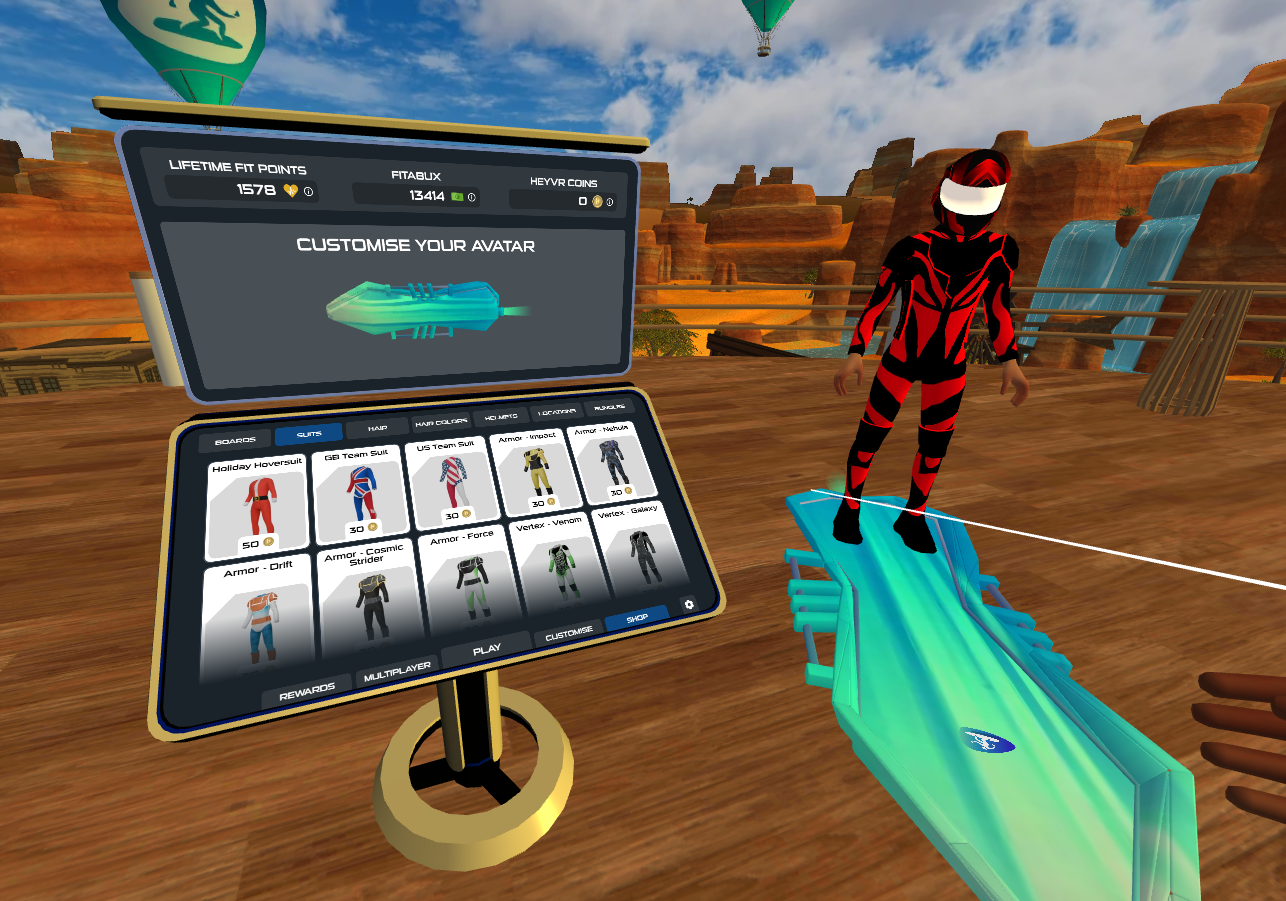HoverFit: Gamifying Fitness in WebXR
- Part 2: Business
Learn how the HoverFit team is turning player engagement into revenue through a data-driven, experimental approach to WebXR monetization.
The Business Challenge – Solving Monetization on the Web
Monetizing WebXR is an ongoing challenge, with no established best practices. Unlike native XR, WebXR lacks a built-in marketplace, leaving developers to figure out their own monetization strategies. Like all other web developers, The Fitness Resort is facing two main problems:
- Web users expect free content - There is a common misperception that “content on the web should be free.” While people are willing to pay for apps, they are far more reluctant when it comes to web-based experiences.
- Lack of standardized payment systems - Unlike mobile app stores, WebXR lacks a unified payment system. Users must manually enter payment details, which introduces friction.
First provide tangible value
As WebXR moves toward the mainstream, it must appeal to mass-market VR and fitness audiences. Fitness Resort believes the HoverFit app should deliver genuine value by offering a high-quality experience that can compete with other VR fitness apps and engage dedicated workout enthusiasts.
Understanding the competitive landscape has guided the design of HoverFit to become an accessible, affordable and unique fitness experience. The variety and richness of the app has to meet and exceed the expectations of VR fitness users.
HoverFit aims to deliver tangible and distinct value to the users to start their monetization journey.
Turning Engagement into Revenue: A Three-Step Strategy
To make HoverFit not only a technical success but also a sustainable business, Yinch and the Fitness Resort team are developinga three-step monetization strategy that follows a funnel approach used by mobile apps and websites:
- Step 1: Build Awareness → Increase Traffic More users = more potential revenue. The first step is getting as many people as possible to try HoverFit.
- Step 2: Improve Retention → Keep Users Engaged A strong player base is key. The longer users stay, the more likely they are to make purchases over time. This can be achieved by both prolonging the length of each visit and also encouraging players to return for more visits.
- Step 3: Monetize Users → Introduce Purchases Over Time Instead of forcing payments upfront, HoverFit gradually introduces monetization by providing value first and allowing users to invest as they engage more.
Experimenting with Different Monetization Methods
With no standard monetization model for WebXR, finding the right approach requires experimentation. Rather than relying on a single revenue stream, Yinch and his team are currently testing multiple strategies to see what resonates most with users:
- In-app purchases – Instead of selling the entire experience, HoverFit offers in-app purchases. Since the game is hosted on HeyVR.io, they leverage HeyVR’s wallet-based token system, which lets users preload funds and make one-click purchases - reducing payment friction.
- Annual pass (non-recurring subscription) – Many fitness apps rely on subscriptions, but subscription fatigue is real - users are tired of recurring charges. Instead, HoverFit offers an annual pass, granting full access for a one-time fee at a massive discount.
- Ads & brand partnerships – They are exploring ad monetization, including in-game ads, and are actively seeking corporate partnerships with fitness brands to integrate branded challenges, sponsored events, and promotional content into HoverFit.

HoverFit In-Game Store
Analytics Show Clear Trends for Monetization
Analyzing user behavior gives clear insights on where to focus efforts to improve the monetization of the game. Yinch and his team defined fours areas where improvements will positively impact the commercial success of the experience:
- Increase engagement time – Current game modes are too physically demanding, leading users to quit after one or two races → Introduce less intense game modes so players can play longer and stay engaged.
- Decrease first-time user churn – First time users often leave quickly if they do not immediately understand the mechanics → Improve onboarding to help new players get hooked faster.
- Users love multiplayer challenges – HoverFit’s monthly Squad Challenges show higher retention rates than solo workouts. Social competition seems to be a powerful motivator → Focus on multiplayer features.
Further Reading: How to Monetize Your WebXR Game
